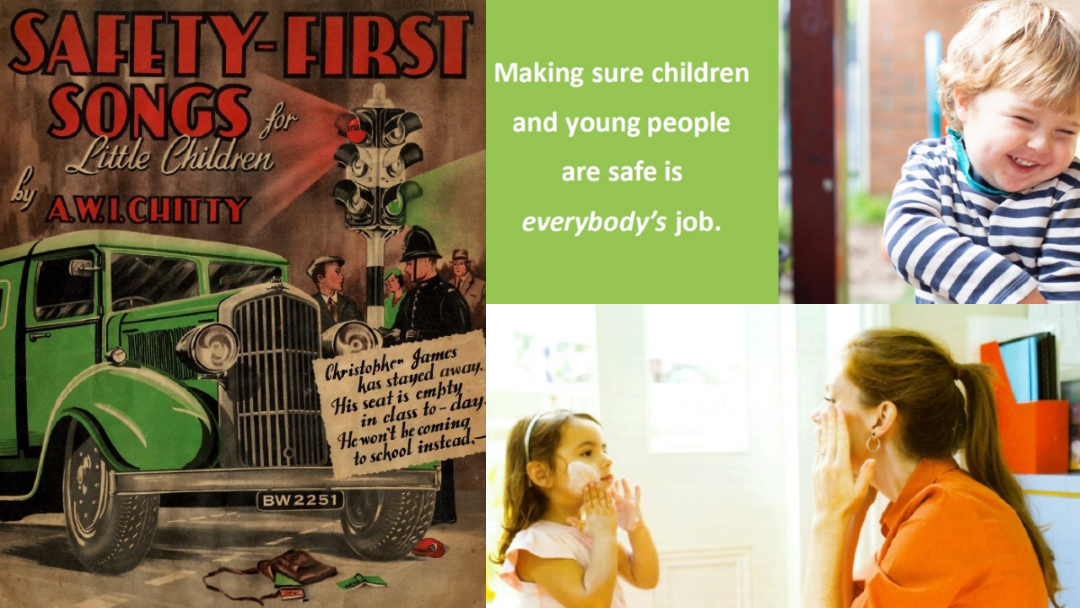History: Children's safety is in our DNA

Child safety has always been at the core of SDN since its founding in 1905. From the earliest day nurseries, From the earliest nurseries designed to reduce infant mortality, to policies ensuring safe play and vigilant supervision, child safety has consistently guided our decisions and practices. Ben Woods digs into our SDN archive to see how this founding vision continues to guide our work today.
SDN was formed in 1905 by a group of women living in inner Sydney deeply concerned with the health and wellbeing of poor children of which there was a growing number. They set their sights on assisting families that relied on working women for all support – financial and otherwise.
As recorded in the first SDN Annual Report (1906), the founding vision was clear:
“It is not to relieve these mothers of their responsibility, but to ease their overwhelming burden of care and anxiety, to enable them to keep their home and family together, and to supply to their little ones with the wholesome and loving care of which they are deprived, and which is so necessary to their wellbeing, that the Sydney Day Nursery Association has been formed” (1st SDN Annual Report, 1906).
These founding women decided that running day nurseries (especially for infants) and later nursery schools (pre-kindergarten) was the way they were going to intervene. It took a long time for the state and society more broadly to take SDN seriously as educators, but authorities understood right away that child safety was paramount at SDN.
Indeed, as Dr Jan Kelly notes in her thesis Not Merely Minded – The Sydney Day Nursery and Nursery Schools Association 1905-1945:
For all of the years under study here, the perception of the nurseries as welfare institutions by most of the Committee women, state politicians, bureaucrats and by professional experts … led to the identification of the services as primarily custodial places which kept children safe from such hazards as physical abuse, inadequate supervision, inefficient or inappropriate food and lack of shelter.
However, to imply as many have done that the nurseries were merely restrictive, custodial places is to do them an injustice … Initially, the aim was to assist in reducing infant mortality rates and later this aim extended to producing children who would enter school medically fit and with healthy teeth. The services also aimed to begin the children’s social and moral development into worthy future citizens. There were then both health care and educational programs at the nurseries.
An example of SDN’s commitment to child safety from the early years can be seen in the move of the Woolloomooloo centre from a terrace on Dowling St to a custom-built ‘welfare centre’ around the corner where it remains to this day. A nurse described the Dowling St premises as “clean and cheerful” but lacking in “fresh air” whereas the welfare centre was designed for the task of caring for up to 50 babies and young children for up to eleven hours a day.
Moving forward we can see some specific policies instituted by SDN to optimise child safety that have stood the test of time.
For example, from the Restatement of the Principles of SDN 1950 is an injunction to staff that:“No child should be left unattended, especially under 3 years, on ‘pottie’”.
And from our 1957 Annual Report, “We thank the City Council for making available and maintaining three playgrounds: Woolloomooloo, Surry Hills and Redfern. Mr McGrath and the Officers of his Department have so readily at times supplied and repaired equipment, taking care to ensure its safety for the children”.
Examples like the above are documented throughout the history of the organisation. Throughout every chapter of SDN’s history, the protection and wellbeing of children has remained our unwavering priority.
Caption re. song book:
1 softcover music and nursery rhyme book.. Title on the front cover is 'Safety-first songs for little children', by A.W.I. Chitty. Title on the title page is 'Fourteen safety first and other good advice songs for little children', by A.W.I. Chitty. Published by W.H. Paling & Co.
This book was used by Nancy Stern (later Lefmann), a student at the Nursery School Teachers' College 1961 until 1963.






